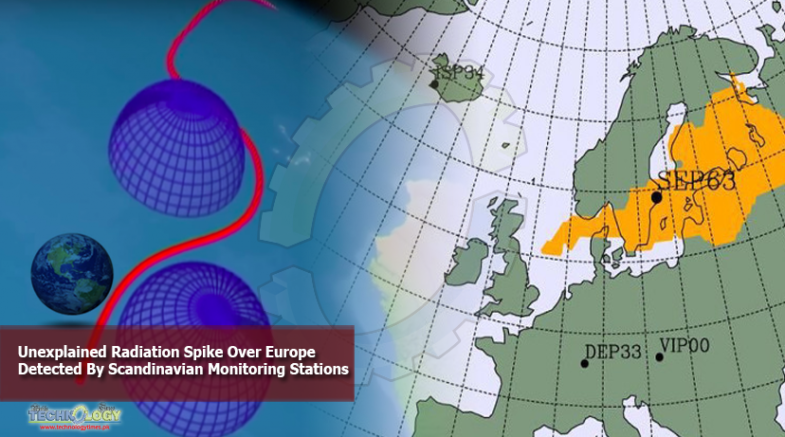A sharp increase in radioactive isotopes have been reported in parts of Scandinavian. The levels recorded are far below anything thought to pose a threat to human health.

However, a sudden rise like this is likely to reflect an unintentional release of particles that may be dangerous closer to the source, particularly if the cause is not found and contained.
Over the last week radiation detection stations in Finland and Sweden recorded a rise in cesium-134, cesium-137, cobalt-60, and ruthenium-103. All four are radioactive isotopes that are extremely rare in nature, but are common products of decay chains initiated in nuclear reactors. Two weeks earlier, Norwegian monitoring sites detected a spike in radioactive iodine-131. It is not known if the two are connected.
The National Institute of Public Health and the Environment in the Netherlands (RIVM) issued a statement on the Swedish/Finnish detection saying, “The radionuclides are artificial, that is to say, they are man-made. The composition of the nuclides may indicate damage to a fuel element in a nuclear power plant.”
For those with long memories (or watched the HBO series), the reports may stoke fears of another Chernobyl. The meltdown in that case first came to the world’s attention after increased radioactivity was detected at a Swedish nuclear power plant.
Nuclear catastrophe may be a popular pick on 2020 disaster bingo cards, but this is much more likely to be something less serious. So far the increase above background radiation levels is more reminiscent of the ruthenium cloud detected across Scandinavian Europe in 2017 and recently confirmed as coming from a civilian reactor. Indeed so far, the detections are smaller in geographic area, and lower in concentration, than the 2017 event.
On the other hand, the reason monitoring stations are capable of detecting such small doses of radiation is precisely because early warnings can prevent things running out of control. That only works, however, if the responsible agency takes the warnings on board.
The RIVM claims the particles “Travelled from the direction of western Russia.” There are two Russian nuclear power facilities in locations that could have produced an emissions cloud like this one. However, Russian news agency TASS reported that Rosenergoatom, which operates both, denies there have been any problems at the plants, or that radiation levels are higher surrounding them.
With relatively few sites reporting the radiation increase, identifying its origins is challenging. The RIVM added media reports that it believes Russia is the source are likely based on mistranslations of its Dutch statement, and that “no specific country of origin can be pointed out at this moment.” Scandinavian authorities are also refusing to pin the blame on any nation’s facilities. However, the continued Russian denial of responsibility for the previous event, despite overwhelming evidence, means the claims none of their facilities were involved may be treated with suspicion.
Originally Publish at: https://www.iflscience.com/
